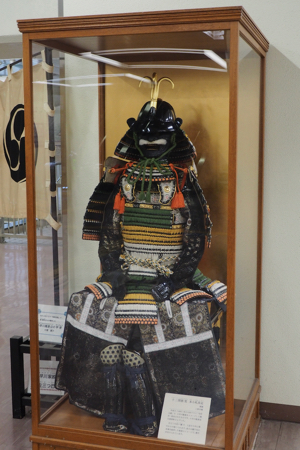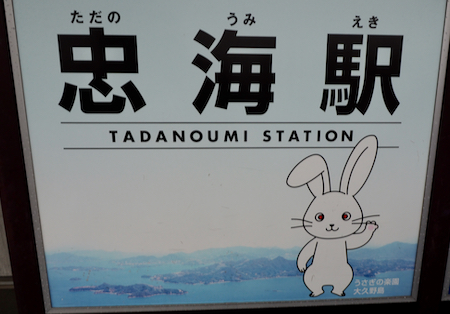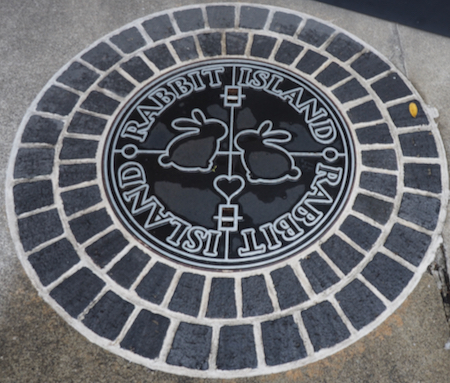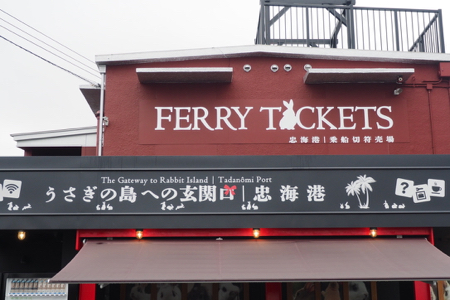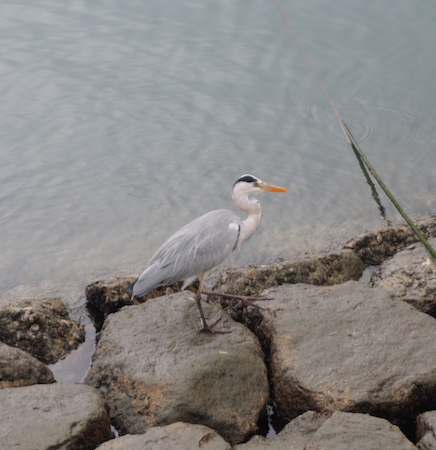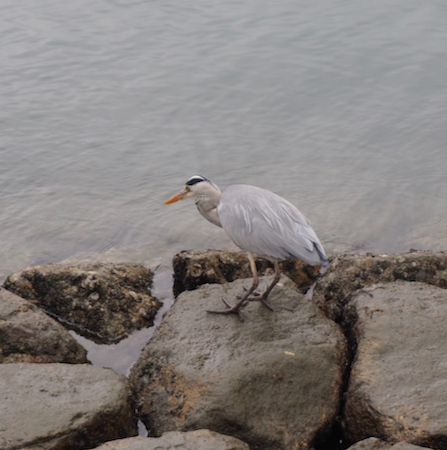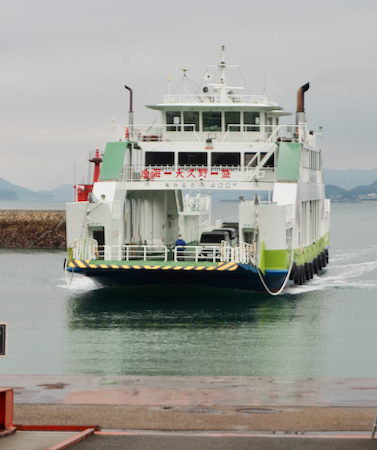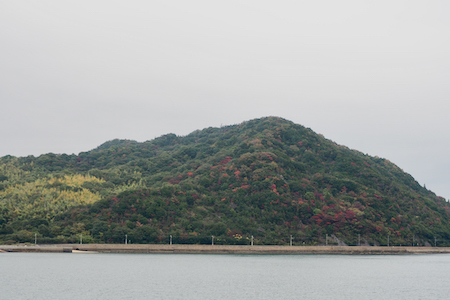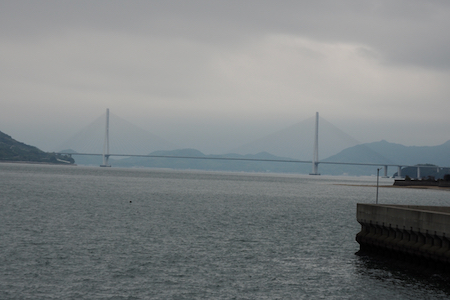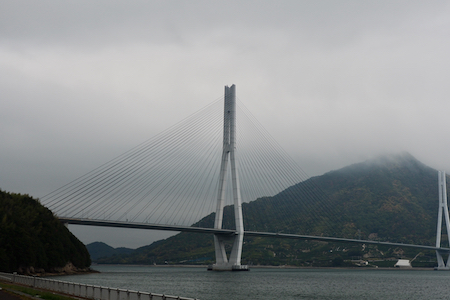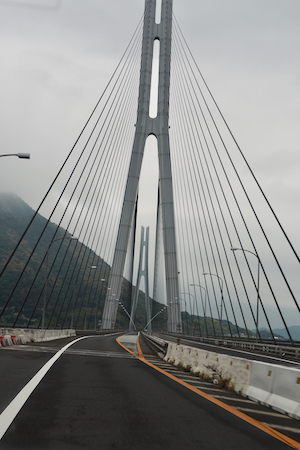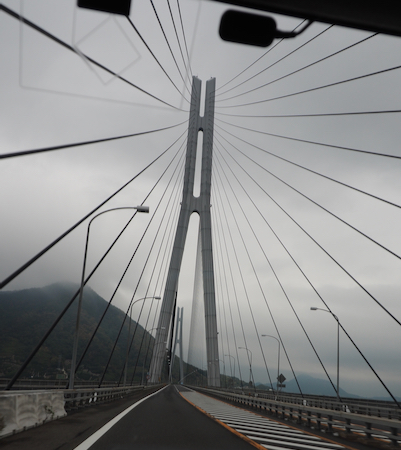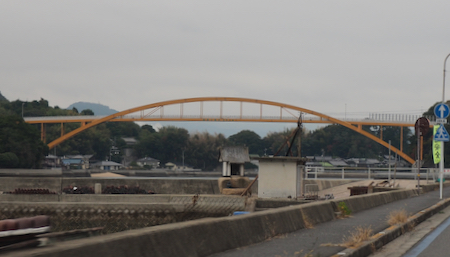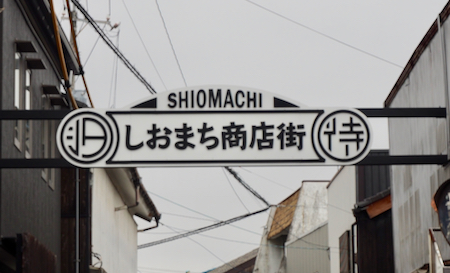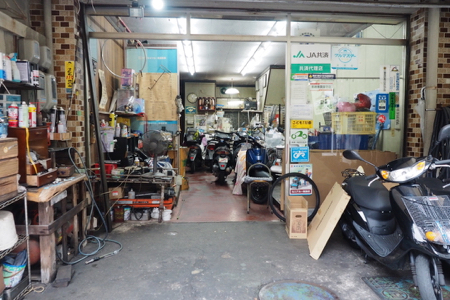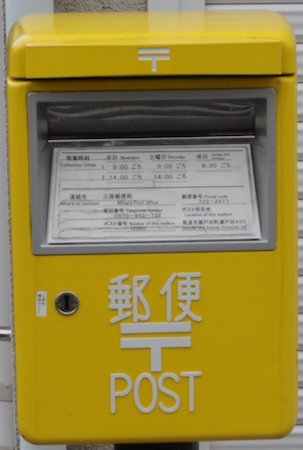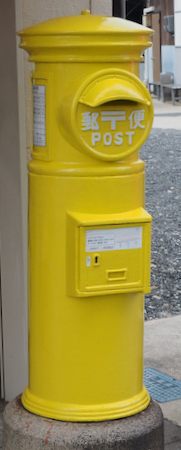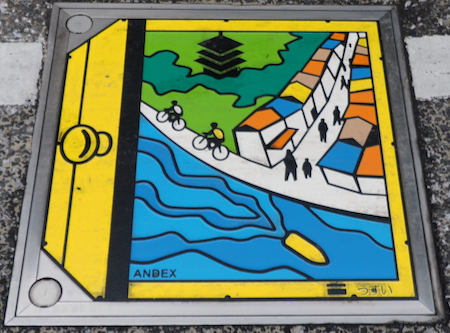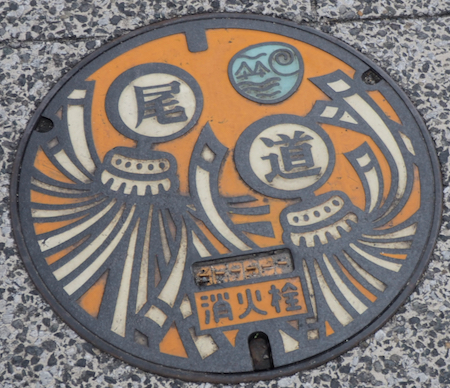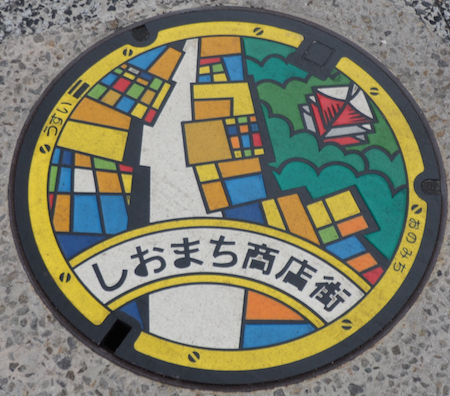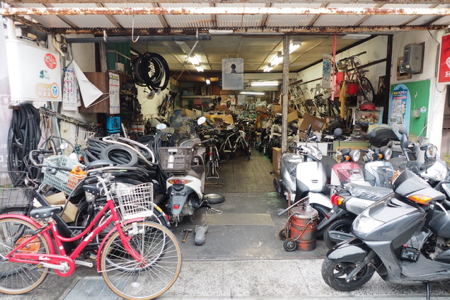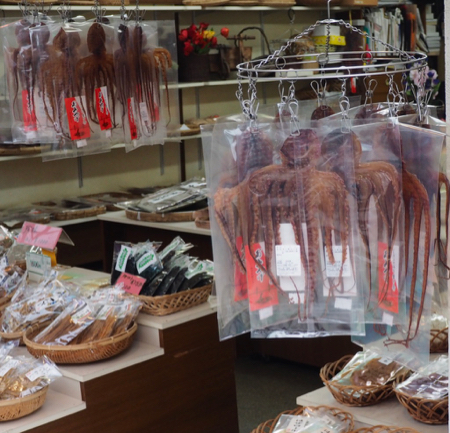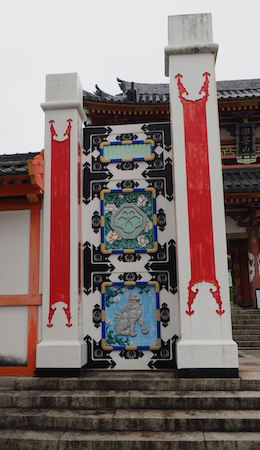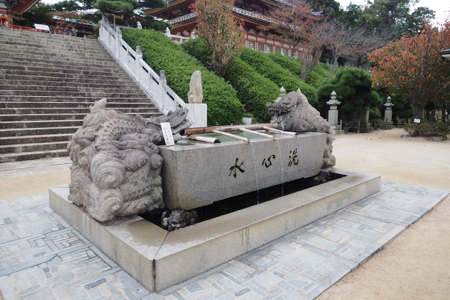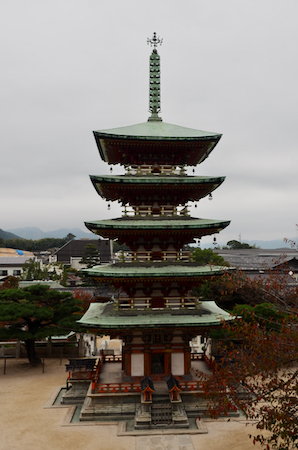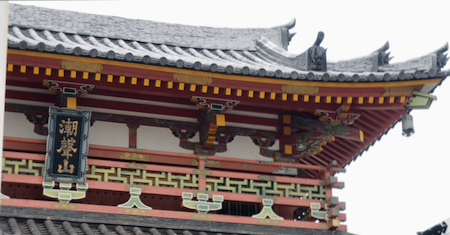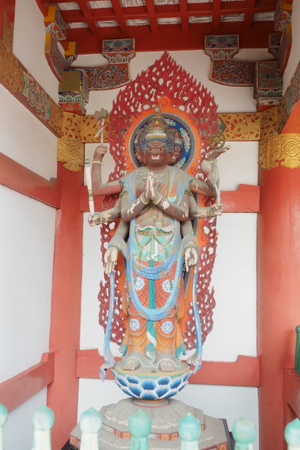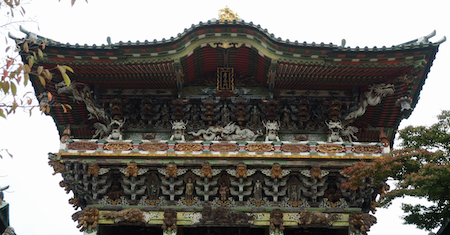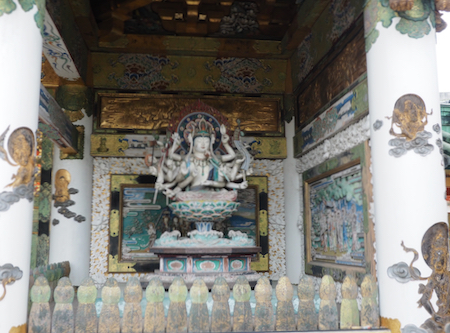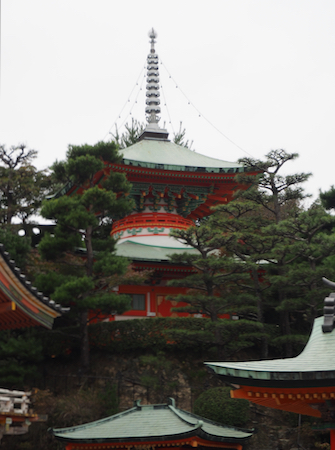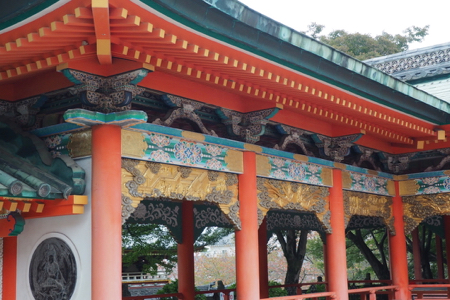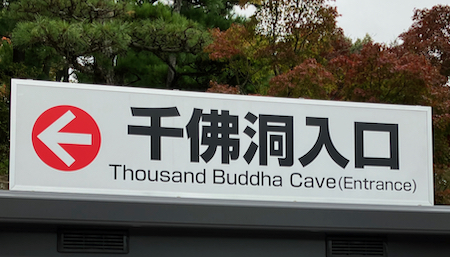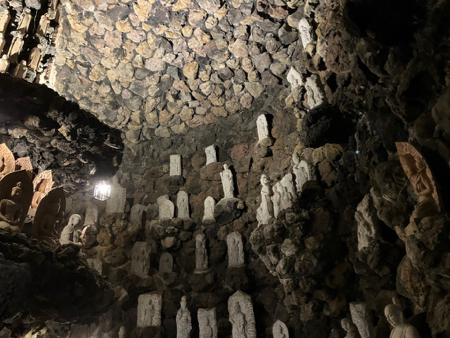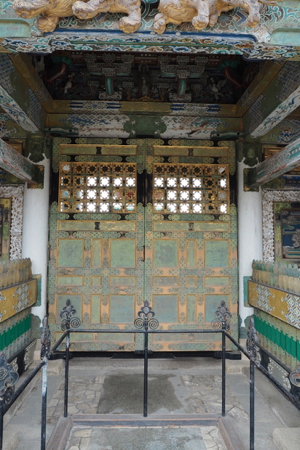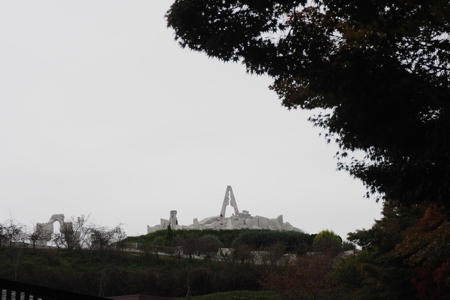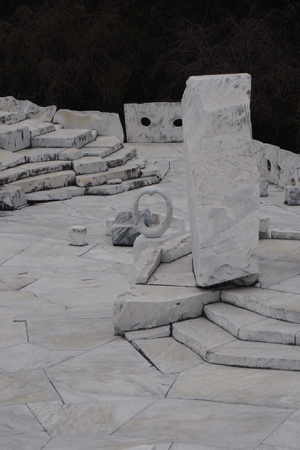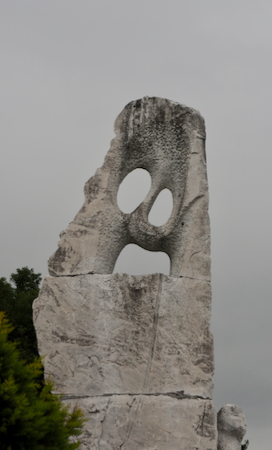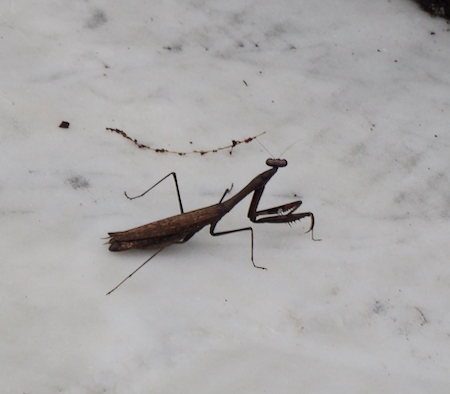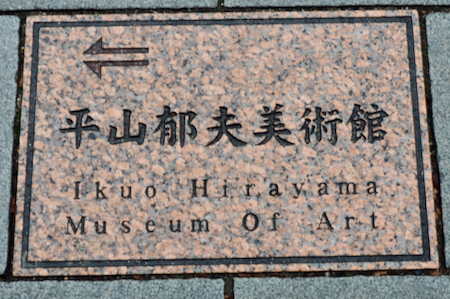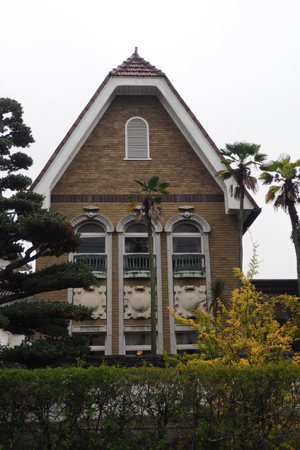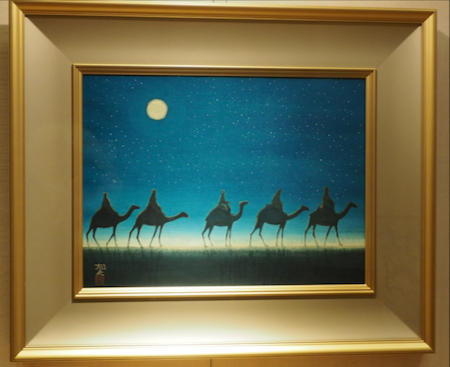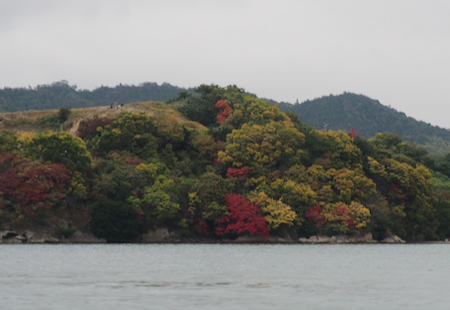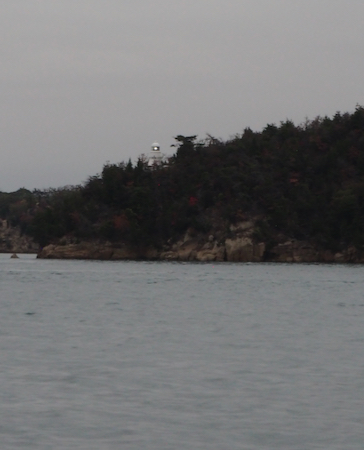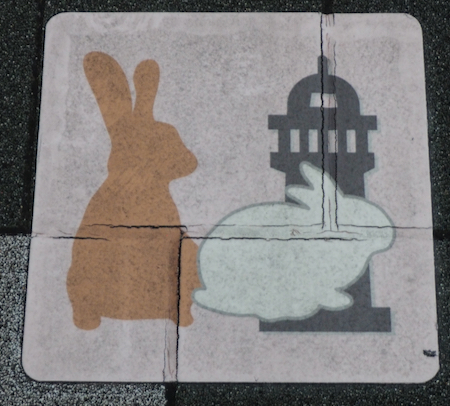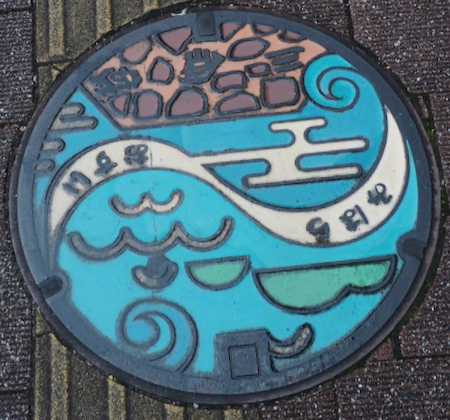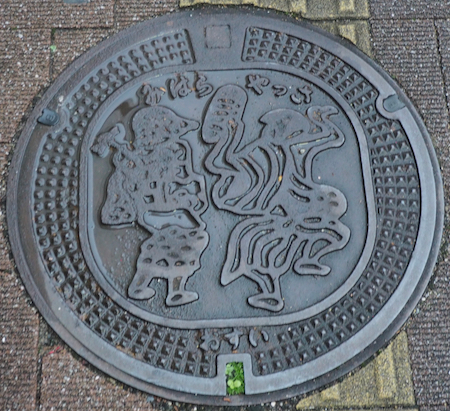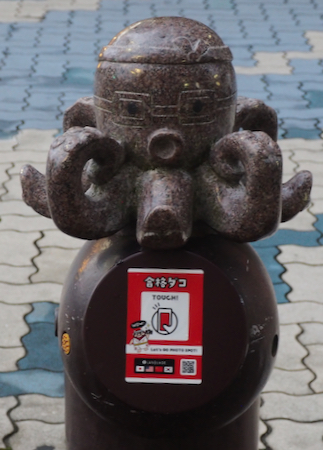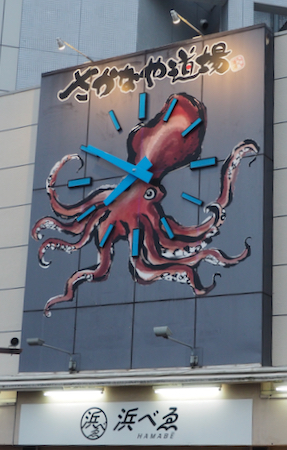Tues., 11/1 - Hiroshima: Islands of the Inland Sea
Today there was an optional tour to the Islands of the Inland Sea that separate the Japanese islands of Honshu, Shikoku, and Kyushu. The group took taxis to the Hiroshima train station, boarded the Kodoma Super Express bullet train to Mihara, then took a local train to Tadanoumi, next we boarded a ferry boat that stopped at Rabbit Island, and then we disembarked at Sakari on Omishima Island. Rabbit Island is no longer inhabited but when the elementary school closed, they let their 8 pet rabbits loose and now the island has around 750 rabbits.
Samuari warrior costume
Heron
Heron
Our Ferry Boat
We got off the ferry at Sakari on Omishima Island to take taxis across the ninth longest cable-stayed bridge in the world. Tatara Ohashi Bridge connects Omishima and Ikuchijima Islands. It is 1,480 meters long with three continuous spans supported by two 226 meter high bridge towers. It is a beautiful piece of architecture even in the grey almost drizzly day. We took lots of pictures.
Tatara Ohashi Bridge
Tatara Ohashi Bridge
Crossing the Tatara Ohashi Bridge
Crossing the Tatara Ohashi Bridge
Konejima Bridge in Setoda
After lunch at Minatoyo restaurant in Setoda town, we strolled along the Shiomachi shopping street
Motorcycle shop
Post box
Also a Post box
There were several really colorful manhole covers
This one is a fire hydrant
This one says "Shiomachi Merchant"
Old building's exposed wall
Another motorcycle shop
Kosanji Temple, which belongs to the True Pure Land Sect of Japanese Buddhism, was founded in 1936 by a successful (wealthy) Japanese businessman to honor his mother.
Many of the buildings on the site are replicas (about two-thirds sized) of some of Japan's most famous temples. Some are illustrated below, but not identified.
Entrance
Or "Cave of Hell"
The cave was built from lava from Mt. Fuji 's eruptions. It contains about 1,000 Buddha statues that illustrate the tortures of Buddhist hell (dismembered bodies floating in rivers of blood, etc.).
Photo in the "Cave of Hell"
At the top of a hill included on the grounds, the founder imported literally a mountain of unpolished marble chunks and slabs from Italy. Some of the marble has been shaped into abstract art and much of it is just laying about on the site. At the top of the hill - "Hill of Hope" - is a sculpture called the "Tower of Light" or the “Praying Hands of the Sunset.”
The whole place is unusual.
"Tower of Light" or the “Praying hands of the Sunset” at the top of the "Hill of Hope"
Some sculptures
Abstract sculpture
Today's last stop was a visit to the Art Museum of a local Japanese artist, Hirayama Ikuo. He was fascinated with the Silk Road and painted many pictures of camels, Afghanistan, and Arab people. The pictures were rather unexpected in this location.
Exterior of the museum
Sample painting by Hirayama Ikuo
Sculpture in Setoda
Fall colors on Rabbit Island
Rabbit Island Lighthouse
Cute octopus
Interesting clock
Marine Road shopping street in Mihara
To get home we took a catamaran water taxi/bus and the bullet train. You don’t see much from the train. About 50% of the time it is in tunnels and has cattle chute walls along most of the rest of the track.
| Return to Top | Return to Itinerary | Return to Trips page to view other trips | Return to Dreamcatcher Home Page |
